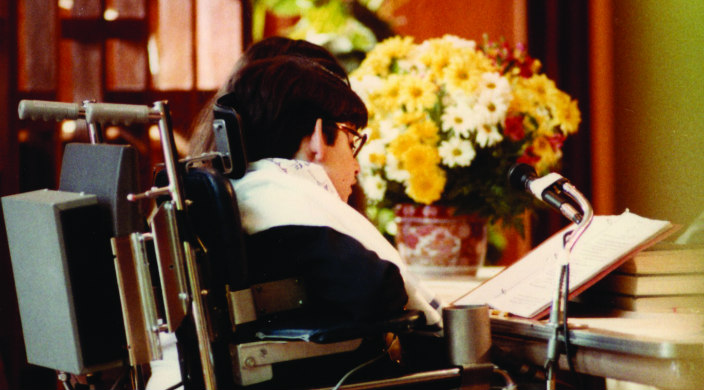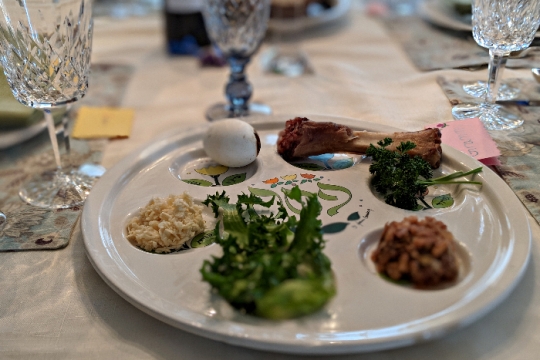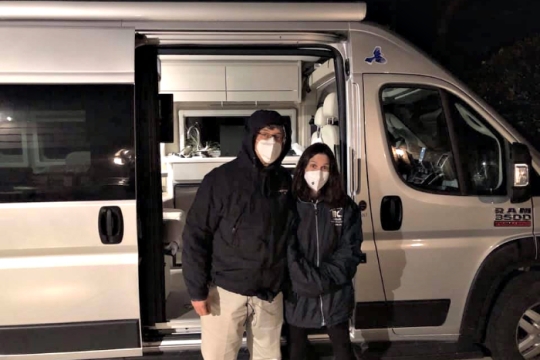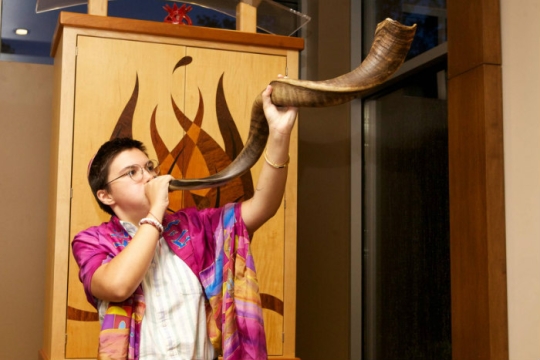
Of all the b’nei mitzvah I’ve led in my 57 years as a rabbi, the one that has remained most vivid in my memory is the bar mitzvah of Jeffrey Erlanger, the boy who gained national attention when he appeared as a guest on Mister Rogers’ Neighborhood and more recently in the film, “Won’t You Be My Neighbor.”
I was the rabbi at Temple Beth El in Madison, WI, in 1983, when Jeff’s parents, Howie and Pam Erlanger, began to discuss Jeff’s bar mitzvah with me. Everyone knew Jeff. Though he had a tumor in his spinal cord in infancy that left his body with severely limited mobility, he zipped around the temple in his electric wheelchair, emanating a constant smile and friendly greetings to all.
Jeff’s parents and sister, Lisa, loved and supported him without limit, and so did everyone else. His mind and his spirit were contagiously alive with inquisitive interest and effervescent joie de vivre, and there was no question that Jeff could do a bar mitzvah chanting as well as any other boy – maybe better. Our challenge was to ensure Jeffrey dignified and unassisted access to the bimah (podium) and reading desk.
Six months later, as we all expected, Jeff’s tutor reported that he had mastered what he needed to learn – a champion. But this was before the Americans with Disabilities Act, and we had yet to modify our sanctuary. Doing so required a team effort, but, because affection for Jeff was so widespread throughout the congregation, getting help was a very easy task. Everyone we asked said yes.
A few nights prior to the bar mitzvah service, about six of us gathered at the temple to discuss logistics. Most of us had, at best, a rough idea of which part of a hammer should bang on a nail, and maybe a vague acquaintance with a circular saw. Fortunately, one person in our group had the knowledge and skill to be our leader.
Temple Beth El’s pulpit was four steps up, so the ramp would need to extend roughly 28 feet in order to be “barrier free.” Unfortunately, we didn’t have 28 feet to work with, so we went with two 8-foot segments, instead, with a flat section halfway up – a kind of base camp where Jeff could rest before his final drive to the summit. We had to build it with sufficient support underneath so it would hold Jeff and his electric wheelchair, and we added a railing to prevent his rolling off the edge.
While our crew was hard at work building the ramp, several others moved the reading desk and replaced it with a table that could be lowered to Jeff’s height level. A chair was placed behind it so someone could hold his book, turn the pages, and point the yad (pointer) during Jeff’s Torah reading.
Around midnight, we stepped back to admire our handiwork. We had persisted in spite of the uncertainties and disagreements about how to construct the ramp; in spite of blisters, banged thumbs and bruised egos; and in spite of complaints from neighbors awakened by our shrieking power saw in the temple’s back parking lot. Mostly, we persisted because we had embarked on a sacred mission, and when you are involved with that kind of a mitzvah, you don’t quit.
The sanctuary was packed when Jeff drove his chair through the doors of the sanctuary and began his ascent on the ramp. A hush. There he was – broadening grin, perched proudly on the resting platform, with only eight feet to go. On he went, until he sat directly behind the improvised lectern. Then, a bigger, more expansive grin.
Lisa sat beside him as he fearlessly led the congregation in prayer. She held the book and turned the pages. Jeff held everyone in the sanctuary spellbound.
In building the ramp for Jeff, we felt we had been true to the Talmudic maxim Kol Yisrael Areivim Zeh Bazeh, “All Jews are responsible for one another” (b. Shevuot 39a).
We shall always be grateful to Jeff for inspiring us to do something we hadn’t dreamed we could do, and to become better people and Jews.
To learn how your community can be more fully inclusive of people with disabilities, visit DisabilitiesInclusion.org.
Related Posts

Pandemic Passover, Take Two: The Long Journey through the Wilderness

"Tour to the Wonderful": This Couple Drove Across America to Join Multiple Reform Synagogues
